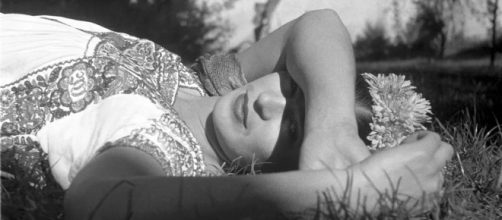Another movie about Frida Kahlo? Why? Is there something we don’t know about her?
The new movie is a documentary showing at the Sundance Film Festival. A previous film (2002) was a dramatization, and the way Art News magazine sees this latest movie: “Her Wikipedia page remains more insightful.”
If the documentary tells a story already told, you saw it coming in the earlier movie when a single note sounded over the opening credits like a gong in a school fire drill. The solitary note set in motion the tale of an artist who portrayed herself over and over.
I rush to say that unlike Art News, Variety Magazine likes the documentary, calling it “a unique visceral portrait using Kahlo’s own writing from her diaries.” Of course, Variety represents the entertainment industry and Art News expects more from an artist than entertainment.
Missing link
By Art News’ account, the one thing missing in the documentary is a critical analysis of Kahlo’s work – something all art calls for. Perhaps there’s hesitation because Kahlo was wheelchair-bound, and it’s not nice to pick on the disabled.
Kahlo’s spine and pelvis were crushed in a trolley car accident during her teens, and despite 35 surgeries, she lived in pain to her last day at the age of forty-four. She painted either from a wheelchair or her bed.
It’s hard to overlook that when assessing her work, but here goes.
What she painted were self-portraits staring full-face, sometimes showing her encase in heavy body brace. Consider “The Broken Column.” The picture title is a literal description of what you see.
And, as if to convey her pain, she pictured the brace with nails sticking out of it. Her face, stiff with that pain, also looks determined. You can’t help admiring her.
But such painting leave you nothing to interpret, nothing to think about past what you see. She tells you everything, and though she tries for picturesque, her work ends up just looking morbid.
Clair Boothe Luce, former ambassador to Italy in the Eisenhower administration, alluded to Kahlo ghoulish tendencies in a biography of the artist by Hayden Herrera.
On seeing a portrait that Luce hired Kahlo to paint of her late friend Dorothy Hale, who had taken her own life, she said: "I will always remember the shock I had when I pulled the painting out of the crate. (..) I felt really physically sick. What was I going to do with this gruesome painting of the smashed corpse of my friend, and her blood dripping down all over the frame?"
At the top of the painting Kahlo painted an angel waving an unfurled banner that proclaimed in Spanish "The Suicide of Dorothy Hale, painted at the request of Clare Booth Luce, for the mother of Dorothy."
Luce said: “I would never have requested such a gory picture of my worst enemy, much less of my unfortunate friend.”
Clearly, Kahlo’s ills impacted her work.
And I’m left with the dilemma: should I say that her in-your-face pictures leave me wishing there was a metaphor somewhere, something that let my mind wander, some flight of fancy?
Seeing the light
Then I think of Van Gogh. He was sick with a ringing in his ear (Tinnitus, undiagnosed in his day) so intense that it drove him to cut the ear off. And he painted the bloody remains of what he did.
But he also went on to paint “Starry Night,” which is not only about the great white light of stars spinning through the sky, but also about twisting cypress trees as if they were thrusting themselves heavenward.
And the thing is, Van Gogh painted this work after he checked himself into a mental institution. Clearly, he sought peace and found it in life above the earth. Sad to say, Kahlo couldn’t get out of her wheelchair even in her mind.


